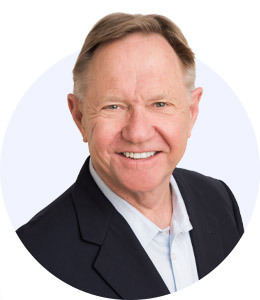If you’re a leader, you know how important it is to thank and recognize employees. It strengthens relationships, keeps people engaged, and fosters a powerful sense of belonging. Because what gets recognized gets repeated, it helps build consistency and move results. And the act of recognizing someone replenishes both parties—you and the other person.
This week I want to provide readers with some activities to connect to the workforce via appreciation and recognition. If you have never missed a column, be aware that a few may be repeats.
When leaders are asked if they recognize staff, the answer is usually yes. However, when frontline staff are asked about recognition, uniformly the outcome is they do not feel they are recognized enough for their work. Can both be accurate? Yes. Can both be wrong? Yes. Perception is in the eye of the beholder.
One of my favorite forms of recognition is a personal thank-you note sent to an employee’s home. Recently, during an offsite visit, each attendee was asked to bring the names of staff they have sent a thank-you/recognition note to in the last 90 days. Next to the name, they were asked to check “email thank-you,” “text thank-you,” or “note to the employee’s home.” Some leaders said that while they don’t write notes, they verbally recognize the person. This is wonderful. However, having a menu of ways to recognize people is even better. Ask yourself which action would have the biggest impact on you. Which “thank-you” would you keep? I shared that it is hard to overdo recognition when it’s based on performance. A leader also needs to be sensitive to the fact that while we may think we are writing lots of thank-you notes—and maybe we are—how many is each person receiving?
People ask me if it has to be a handwritten note to be effective. No. A typed note will work if the content is specific and not just a generic “thank-you.” Once when I worked in an organization, I was excited to get a letter from the CEO. At lunch that day, the topic of the letter came up. Yes, it was nice; however, we did realize we all received the same letter. For large organizational results, such a letter may be perfect. However, the more specific it is, the better.
If you’re in mid-level management, you can help the top leader or owner thank employees. Recent research shows that trust in senior leadership is significantly down. We can make many good assumptions on why this is. Covid created a lot less visibility for senior leaders. Some places let staff go temporarily and at times permanently. Hours were reduced. Supplies were (and still are) hard to get. Many of these circumstances were beyond the C-suite’s control, but they still had a negative impact on trust. Plus, even in the best of times, senior leaders need help from the middle in recognizing people.
In the workshop after the discussion on leaders sending thank-you notes, the question was asked, “Over the past 90 days, how many names have you sent to your leader so they can write a thank-you note?” Senior leaders want to send notes to staff. They also want to personally thank people. However, they also want to be supportive of the manager. I have found over the years that the best approach is a collaborative one: Before a senior leader sends a thank-you note, they need to make sure they’re on the same page with the person’s direct supervisor.
When I was at Holy Cross Hospital in Chicago, I was walking through the hospital. I stopped by an area and said to a person, “Thank you for doing such an excellent job.” When I got back to my office, the supervisor of the area sent a note that they wanted to meet with me. I thought, Could this be a “thank you for stopping by” meeting? It was not. The supervisor shared that they had written up the person I had complimented that morning. It turns out that my stopping by to say “fantastic job” did not help the situation. She thanked me for stopping by and then asked me to check in next time before I started my complimenting. My lesson is that it’s okay to recognize if I am recognizing the person for a specific action I observe. For example, “Fitz, I saw how you helped the patient find where they were going. Thank you.” If I have not observed, it’s best to ask the manager who they would like me to recognize and why.
For example, Fitz’s supervisor, Steve, might send me an email saying that Fitz did an excellent job preparing an area for visitors. I can then send Fitz a note reading, “Steve sent me an email sharing what an excellent job you did preparing an area for the visitors from Whitewater. Thank you so much for making sure everything was in place. Your work on this made a difference. Thank you, Quint.” The key is for Steve not to copy Fitz on the email to me. When Fitz reads my note, he will realize it is due to his supervisor, Steve. This way Fitz feels good, and Steve and I both get a win.
A few tips.
- Do not assume recognition is taking place. Ask those leaders who report to you to send notes to you on staff to recognize and why.
- It is a good idea to collaborate with other leaders on recognition and thank-yous. As my Holy Cross experience showed, one leader may not know the whole story. And as the Fitz example showed, when leaders work together, we can get a win-win-win.
- It is good to ask people how they like to be recognized. However, be aware that many times they are uncomfortable sharing something or will not want to look self-promotional, and so will minimize their need for recognition.
- Do not limit recognition. If it’s based on performance, let us hope there will be lots of recognition.
- Thank-you notes to coworkers, customers, and community members should be a regular part of a manager’s process. Schedule time each week to identify people to send to your leader to recognize. During that time, also write some thank-you notes yourself.
I learned the value of a thank-you letter at my grandfather’s wake when I was sixteen. At the wake, people came up to my grandmother and said they had gotten a letter from her husband and talked about what it meant to them. After the funeral, I was at my grandparents’ house. I saw four filing cabinets. They were filled with carbon copies of the letters my grandfather had sent (they were typed).
Never underestimate the impact thank-you notes have on a person. They may be remembered, and cherished, for a lifetime.







